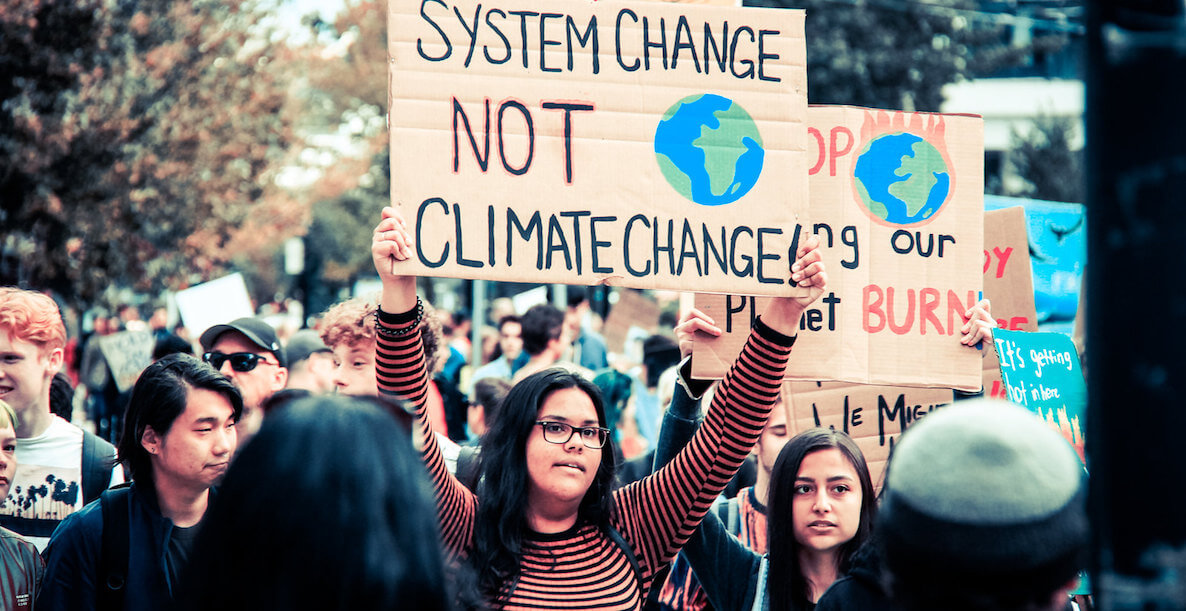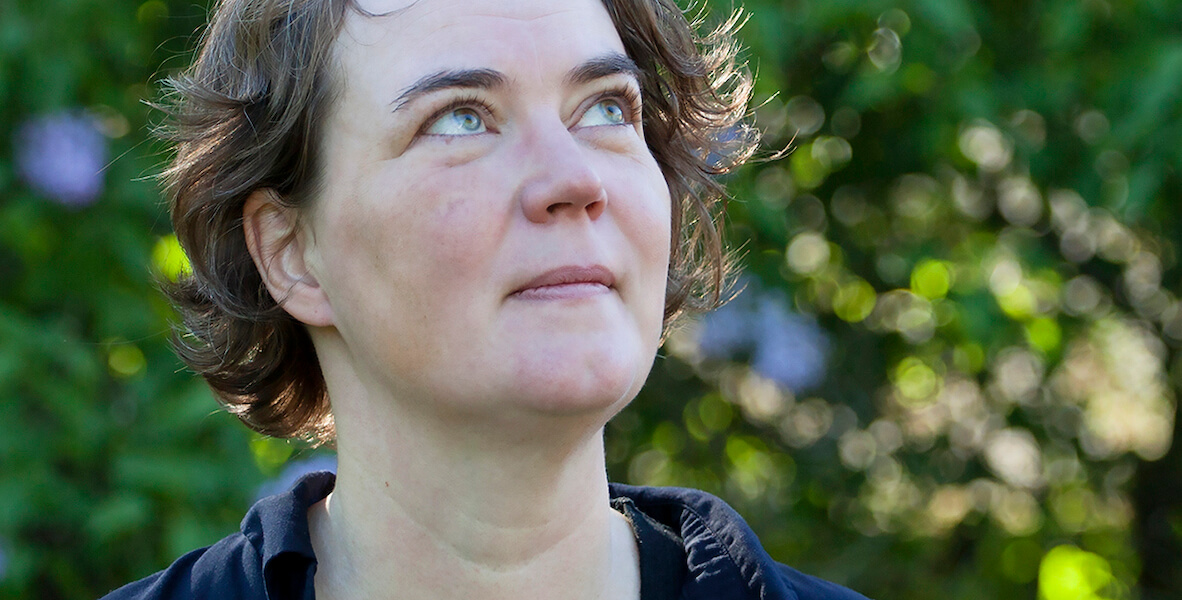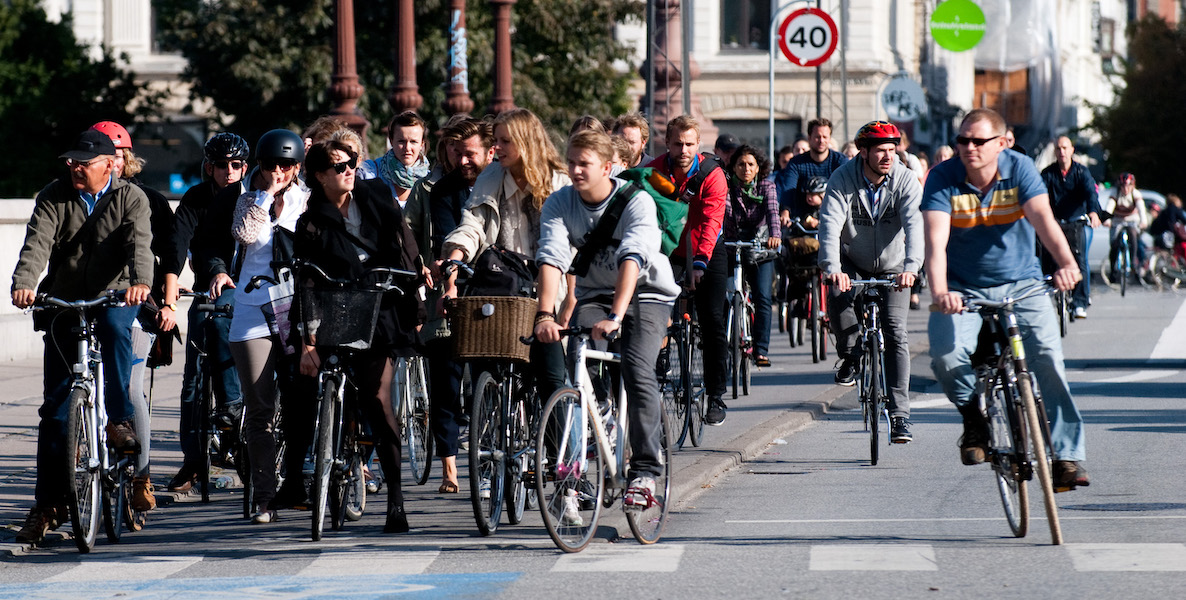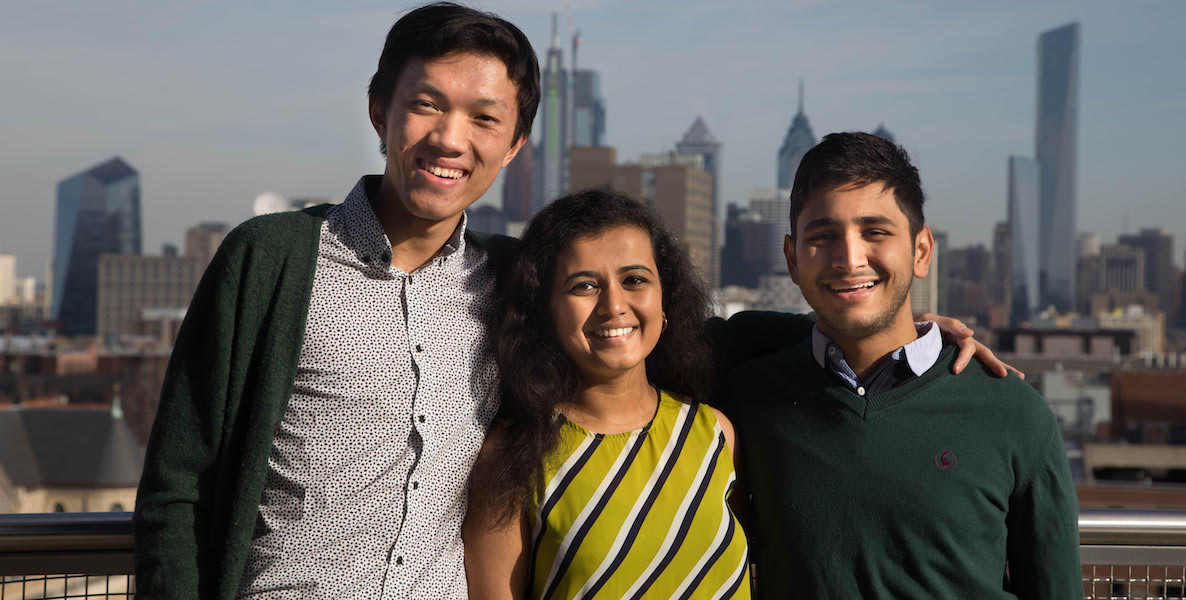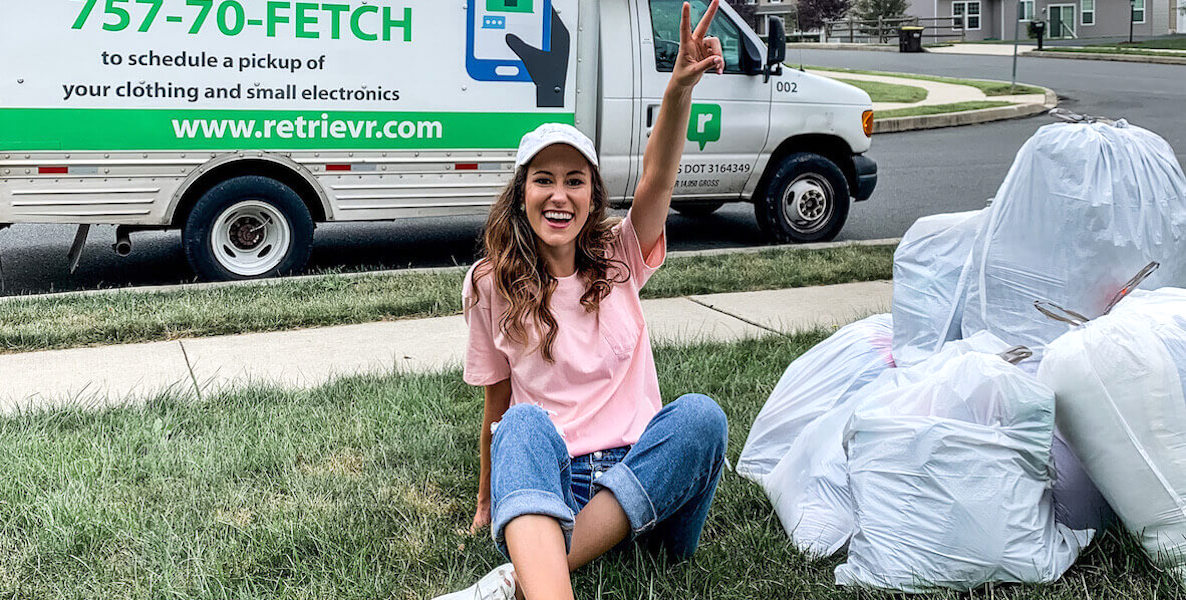The Biden administration has built the strongest climate team of any U.S. administration. As this team and their congressional allies begin to craft federal policies to address climate change, it is critical that they focus on how they can leverage and learn from cities, in the U.S. and beyond.
Nordic cities, in particular, have been at the vanguard of both climate mitigation and adaptation solutions for quite some time. Luise Noring, Torben Klitgaard, Helle Lis Soholt and I, for example, have written before about how Copenhagen is on a glidepath to become the first global city to achieve zero carbon emissions. Copenhagen’s plan is an intricate mix of concrete goals and initiatives that aim to drive change through four areas: energy consumption, energy production, green mobility, and city administration.
Like Copenhagen, Helsinki has developed a long-range climate action plan. But its business community has also driven an interesting approach to problem solving which, in many respects, aligns well with the multi-sector networks of U.S. cities.
In 2016, a group of leading businesses, universities, research institutions and government actors formed Helsinki Metropolitan Smart & Clean Foundation (“Smart & Clean”). The goal was to catalyze a surge of action over a five-year period and drive impactful climate solutions in the transport, energy, construction, and the waste and water sectors.
The formation of Smart & Clean rested on several principles:
- The ability of multiple stakeholders to collaborate around wicked problems that no single entity can tackle alone is central to designing, financing and delivering transformative climate solutions. Issues as complex as mitigating or adapting to climate change require multi-sector collaboration between public agencies, private corporations and consultancies, universities, and non-profit philanthropies, think tanks and intermediaries.
- Emission-reducing and other solutions can generate new types of business and create export possibilities for businesses. The Nordics are driving the transition to the Green Economy for good reasons; they understand that being ahead of the curve burnishes the global brand and economic position of their countries, cities and companies and brings tangible rewards in jobs and investment.
- Time limited, action-oriented alliances can drive a surge in activity and enable collaboration to occur across multiple sectors. They also, importantly, reduce the territoriality that often limits city and metropolitan effectiveness.
To understand better the role of Smart and Clean and its application to the U.S., I spoke with Iina Oilinki, a chief innovation officer at the foundation.

Bruce Katz: Iina, thank you for virtually joining me today. To bring all our readers up to speed, can you tell me a little about Smart & Clean? What is its mission? Why and when was it formed?
Iina Oilinki: The Helsinki Metropolitan Smart & Clean Foundation has been a five-year ‘step change’ project with 29 public-private partners from the Helsinki Metropolitan area—cities, leading businesses, universities, research institutions, and state actors. Smart & Clean has orchestrated impactful climate solutions for systemic urban challenges in sectors that are a primary source of carbon emissions. The organization’s operating period has been 2016 to 2021.
Helsinki has developed a long-range climate action plan. But its business community has also driven an interesting approach to problem solving which, in many respects, aligns well with the multi-sector networks of U.S. cities.
The idea for the collaboration model came from the Finnish business world. They wanted to work closer with the cities to make the Helsinki area a showcase for smart and clean solutions. The idea was that cities would open up their infrastructures and services for new innovative solutions made together with the R&D&I community and make references for companies for their export efforts.
BK: Can you describe the process that Smart & Clean uses to design and deploy solutions?
IO: Our working model is based on the idea that as the climate crisis is an urgent issue for our planet, we need to put our efforts into building solutions that have sufficient impact on emissions. That means not just tackling emissions produced within our city or country borders but also emissions that are created through our consumption demands, like clothes, electronics or food.
That means, sometimes, that we need to change the system. Our work starts by identifying a solution that has enough impact and then using data and analysis as well as visualizations and communication to make it clear for everyone that we want to involve in our projects what the goal is and what it means to achieve it. Once we have a clear goal, we figure out all the components needed for getting there.
Our flagship project is Closed Plastic Circle, where the goal is to comprehensively cover the entire life cycle of plastic, from product design to collection and reprocessing into new products, and while doing it, significantly cut down emissions from plastic production and burning plastic waste. Closed Plastic Circle is an example of a regional project for which the ecosystem produces solutions.
It sets a common goal for the different actors: all recyclable plastics should be recycled into materials. It involves, for example, creating new solutions in plastic collection, ensuring the circulation of hard plastics, considering how to generate demand for recycled plastics and thinking about how plastic circulation can be promoted through regulation.
As this illustration shows, we have identified all the interlinked actions that are required to mitigate the impact of plastics on carbon emissions. That means design, collection, logistics and industrial recycling of plastics, re-use of the material into new products, strengthening supply chains, creating demand (also, especially in the beginning from public procurement) and influencing regulation and funding for new innovations.
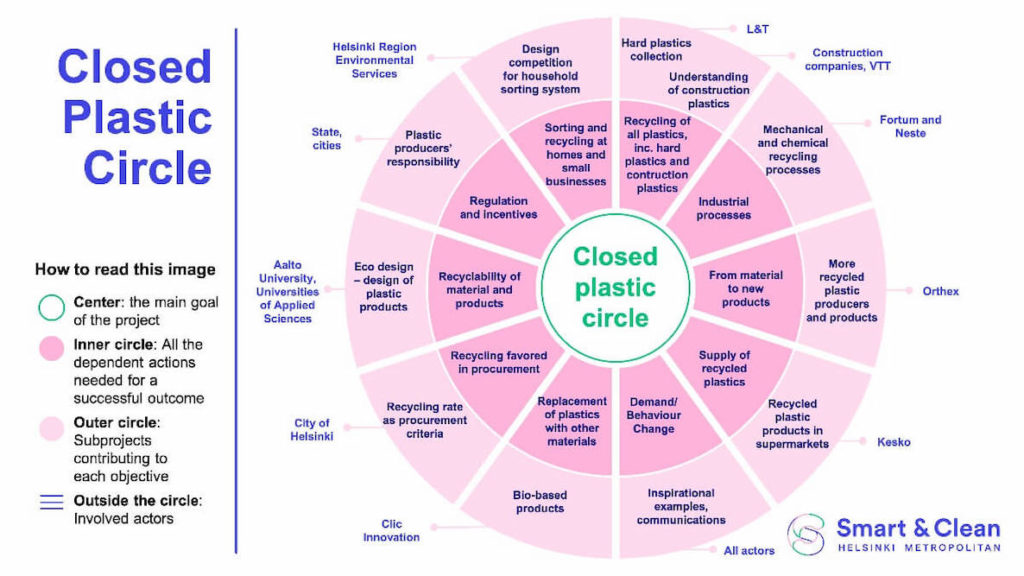
As you can see, these changes require active participation from many public and private organizations. What we also try to communicate with the visualization is that none of the actions alone will change the outcome. There are interdependencies between actions and actors, i.e., with any of the sectors missing the rest cannot work either.
For example, if you don’t have someone collecting plastic you have no point in setting up a factory/recycling plant but also even if you have a logistics system and a factory but you have no demand for recycled plastics you need to create that and the public sector can be a huge driving force by changing procurement criteria and regulation.
The strength is in showing that you need both the public and the private sector to drive system change and that there is enormous potential for innovation and research (in our example in new products, design and recycling methods). Our work unveils these interdependencies, figures out missing sectors and identifies the needed actions and actors.
BK: So, you treat cities and city solutions as integrated ecosystems rather than silo-ed, technocratic responses?
IO: Yes. A lot of people are using the term “ecosystem” these days but what I think we have proved with our model is that like in its original definition it’s a system of connected organisms that cannot survive without each other. System change, in other words, requires that everyone’s input and participation is critical.
Our role has been to think through all these different aspects of change and then run the background show: talking to people in companies, universities and local and national government, get them together and make them see the dependencies but especially the benefits of working towards a shared goal.
Another part of the work is trying to identify the triggers that can accelerate the process for systemic change. Sometimes it can be a government regulation that pushes companies to create more sustainable processes and products. It can be incentives (like tax cuts) for people to act differently or it can be demand of more climate friendly products by consumers. And sometimes it’s the opportunity of creating new jobs because there are new kinds of processes or new export possibilities because companies get good local references. The strength of our model lies in its flexibility; it is by no means limited to thinking about circular economy or climate crises.
I am impressed by New York City’s use of regulation to catalyze action. New York’s new building energy efficiency code is so ambitious that they need tools to help companies get aboard. So, the city is both using the strictest tool at its disposal (i.e., regulation) and then adds other tools (like incentives, knowledge building, coaching, collaboration models or ecosystem building) to get companies up to speed.
BK: What have you tangibly achieved with the Closed Plastic Circle effort?
IO: Currently only 6 percent of the plastic is recycled into new material. We’ve calculated that with this kind of systemic approach we can reach 60 to 70 percent, which will save about 330,000 tons of co2e, which translates to the annual emissions of about 80,000 people in the Helsinki area.
Systemic change needs broad thinking. You will need to think about how cities are planned, how attractive public transport is, how active mobility like walking and cycling is supported, how you enable multimodality and shared mobility, how you support e-mobility and renewable energy sources and how you support new innovations by opening data and letting companies pilot their innovations in real life testbeds.
But this will take time, approximately 10 to15 years, as there are so many processes to change. We have a data model and a leadership task force in place to help us choose the right steps at the right time. And lots of projects are already under way, including new procurement criteria for cities, construction regulation for city building sites, collection of hard plastics, testing chemical recycling, etc.
BK: Does this approach work beyond climate?
IO: Absolutely. I personally think it’s a pretty simple model for leading any change. If you know what you want to achieve you can start by thinking about what are all the changes in a given locality that need to be done.
I am not an expert in this, but just to give an example of something very different, we could try to think about ending childhood poverty in a given city. You would have to think about whether there’s universal and affordable childcare, whether the schools give equal opportunities for all children to learn, whether higher education is affordable and available.
Are there jobs in the area? What is the housing system like? Is the environment safe? Are there safety nets for families who can’t work? Are there food programs? What is healthcare like?
I know these appear to be huge problems to solve but unless one looks at all those aspects the system can’t change for better. If you fix just one thing you know the system can fail at another point. But you need to have all the people who can change these things working together towards the goal. And you could probably calculate the impact of achieving this goal—how many more educated, tax paying citizens would you end up with, how many healthier adults? Those are savings in dollars but of course there’s also the human aspects.
In our work we usually list a few important impacts such as Co2 emission reduction potential, new jobs created and circularity percentage increased. With precise and clear metrics, it’s easier to show progress.
BK: What are broader lessons for the U.S. and other countries, as they scale up their climate solutions?
IO: I think there are three lessons about the mechanics of collaboration and networked governance and action.
First, set a goal that is both well-defined and broad enough so that a) everyone understands the process they are involved in; and b) can find a role in it. Historically President Kennedy’s Moonshot and Google’s challenge for a driverless car have been really good examples of setting a goal that is defined but give the participants a wide range of options on how to get there.
Climate-wise I think we need to do the same, set an understandable and clear goal (e.g., reduce emissions so that we will not exceed 1.5 ° warming) and then work on changing whatever systems we need to change in order to get there.
Second, enable ecosystems by anointing a driver that runs the process. This orchestrator can be an organization that is both neutral and at the same time has enough means to collect data, fund research needed and get the needed participants to work together towards the set goal. That’s been the role of Smart and Clean. It has brought disparate players together in structured ways that has lessened the fragmentation in Helsinki and compelled a surge in action and impact.
Finally, recognize that city governments have disparate roles to play. When it comes to developing sustainable solutions, a city government can be, for example, a strategic leader, a financier, a supplier, or a spokesperson.
At its best, a city government enables action by providing testbeds, resources, and other necessary conditions for developing new business. It can develop circular economy criteria for procurement, for example. City governments also have an important role as educators and communicators who raise awareness and increase dialogue between city actors and dwellers.
Systemic change needs broad thinking. If you think, for example, about 1.5 ° mobility in cities you will need to think about how cities are planned, how attractive public transport is, how active mobility like walking and cycling is supported, how you enable multimodality and shared mobility, how you support e-mobility and renewable energy sources and how you support new innovations by opening data and letting companies pilot their innovations in real life testbeds.
BK: Thank you, Iina. As Smart & Clean approaches the end of its 5 year life, its remarkable the depth and breadth of thinking and action you have done in such a short period. Your central message dovetails well with the tenets of New Localism—i.e., the existential threat of climate change will require a new understanding of how problems get solved today and how innovations in one city can spread and scale so they have transformative impact. Enabling more multi-level, multi-sector and multi-stakeholder collaboration represents a new approach to urban leadership that will ultimately enable more cities to deliver a green transformation.
Bruce Katz is the founding director of the Nowak Metro Finance Lab at Drexel University.


